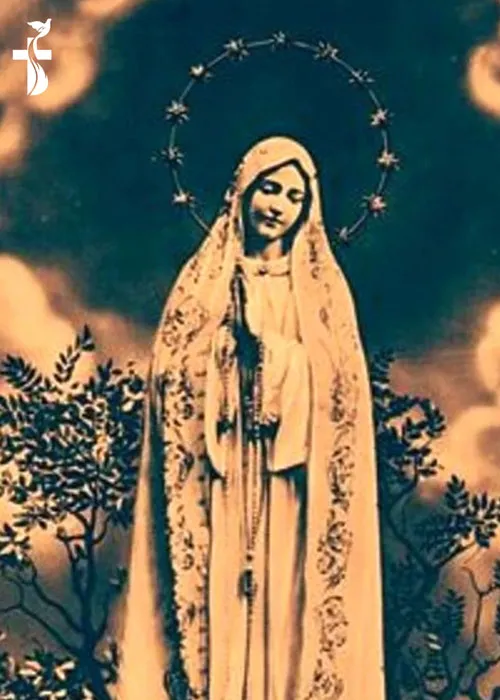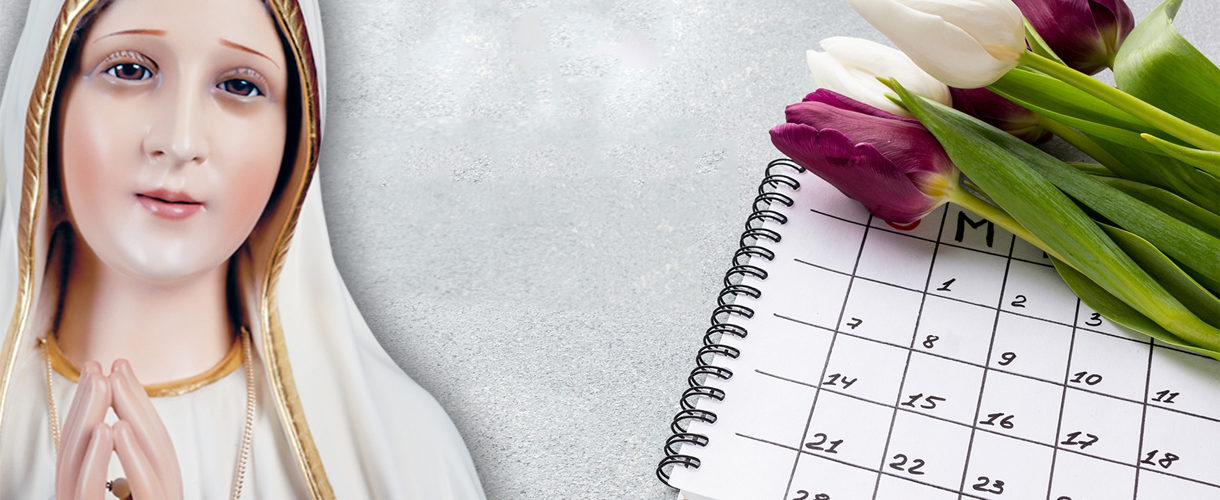
Our Lady Of The Thorn
Country :
Year :
During the Middle Ages, when many a knight rode off to the crusades, never to return, among the many widows left behind was one of saintly repute on the heights of Jura. She was devoted to the Mother of God, whose image in her chapel she kept constantly supplied with fresh flowers. One day in wintertime she went searching in the woods for some fragrant twig to grace her Marian shrine. Thorn trees do not bloom in winter, but our Lady’s devotee prayed that she might find a love-offering. Naïve and childlike in her confidence in Mary, she was not surprised to find blossoms on a thorn tree. Some days later, she went at dusk to get another fresh spray from the obliging thorn-tree, and found it all alight; she was troubled as she went through the woods, fearing it might be the light from a robber’s campfire. She peered through the bleak winter-branches at the blossoms swaying in the breeze. Hurriedly picking a branch she went home and told the chaplain her story.
He and an old servant went with her the following night, chanting hymns as they approached the radiant tree. The chaplain parted the branches and saw a small statue of Our Lady, surrounded by a circlet of blossoms on the branch. It was a small statue, not pretty, rudely carved of wood and painted in bright colors; yet there was no doubt about its identity as a statue of the Mother of God. They took it home, rejoicing and fixed a niche for it in the chapel. There the noble lady and her retinue watched and prayed until midnight. In the morning, however, the statue had returned to the thorn-tree. The lady feared in her humility that her own unworthiness sent the statue from her; but the chaplain assured her that Our Lady simply wanted to be honored in the place that she herself had chosen.
A chapel was built around the thorn-tree and the statue left in its original spot. Its fame spread all over Europe, and for many years pilgrims turned from the more famous pilgrim roads to seek out the narrow gorge where Our Lady of the Thorn held court, and sprigs of the favored tree withered on many a chapel wall throughout Christendom. Nuns, too came to the favored spot, and the noble Lady gave them her house for a cloister and built there an abbey church. She herself joined the nuns and after a holy life, died at the foot of Our Lady’s altar. Now grasses creep for many centuries over the stones worn smooth by sandaled feet of consecrated nuns, and the pilgrims ways are lost in the brush and the thorn.
Still, each spring, till Time is no more, the thorn trees bloom, and white petals testify to those who will listen, to the tale that no scientist would believe, the story of Our Lady of the Flowering Thorn. If you wish to check on the details, you might go yourself to the forgotten valley near the highest peak of the Jura and walk among the ruins there. As you kneel on the grassy stone that once formed the arch above the chapel window, say a prayer to Our Lady for the one from whom I heard the tale, for me, and for all lovers and devotees of Mary.



